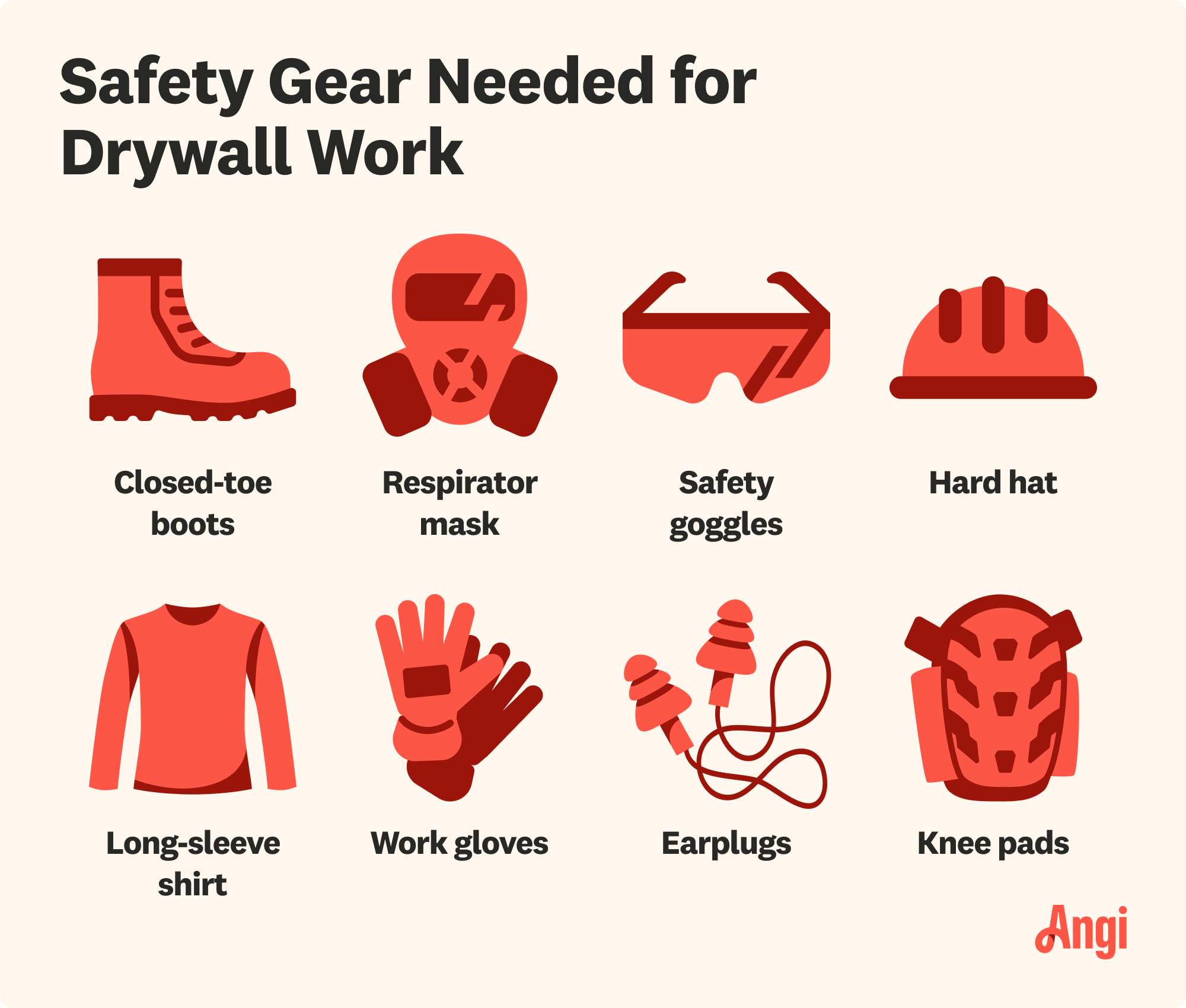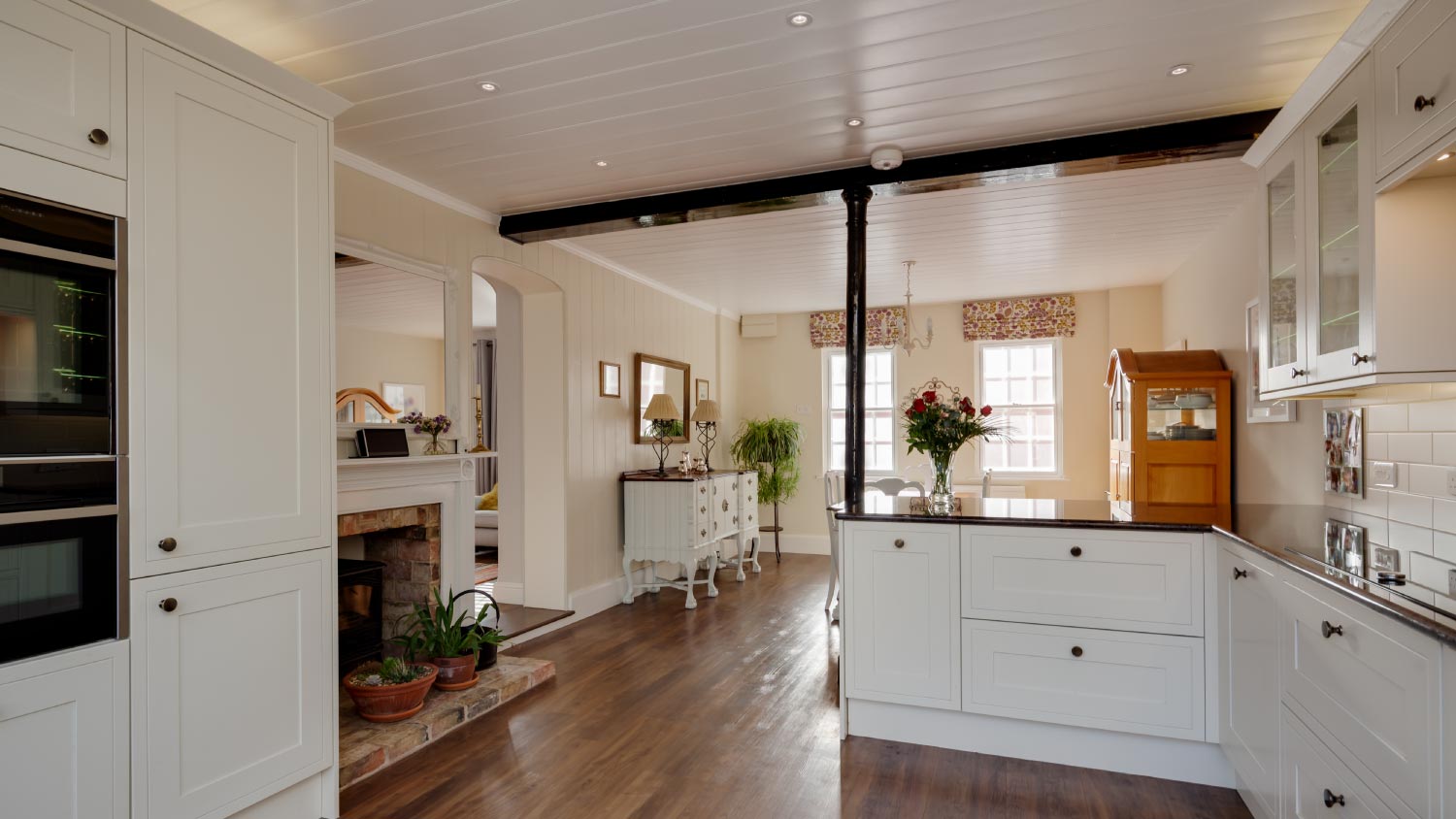
Pre-drywall inspection costs vary depending on the home size, build complexity, and reporting you receive. Estimate your budget with this cost guide.
All those walls need is a new coat of drywall ... or do they?


Putting drywall over drywall can freshen up a room.
This is not an option if the existing drywall is severely damaged.
Use one-quarter inch drywall when installing on top of existing drywall.
If the walls in your home could use a refresh–and more than a fresh coat of paint–can you put drywall over drywall? In some cases, yes, you can, but this isn’t always the right solution. Here’s what to consider before you put new drywall on top of your existing drywall.

Your home's walls have a history, and over the years, they've developed a few dings and scratches. While in some cases, patching up the drywall and painting it can suffice, more extensive damage calls for more extensive repairs.
If your walls have a lot of holes, gouges, or marks, putting drywall on the existing drywall can be one way to give them a facelift. You may also decide to put drywall over drywall if you've come to regret your previous design choices, such as old wallpaper or paneling.
In certain cases, putting new drywall over old drywall is a cost-effective and speedy way to refresh a room. A few of the advantages of putting drywall on drywall include:
It's less extensive than tearing out and replacing existing drywall.
It can help soundproof a room.
It can cost less than installing all-new drywall.
It can improve the insulation in a room.
Use any remaining available wall space for built-in storage. You can install bench seating with storage underneath and install decorative cushions for the ultimate multipurpose piece. DIY garage shelves are also an excellent option for garage organization for storing items you use infrequently, like seasonal outdoor equipment and holiday decorations. They can also add tons of utility to small garage spaces.
Your converted garage is an ideal place to install smart home technology. Remote-controlled dimming lights and a Bluetooth-connected HVAC system make it effortless to get comfortable.
Studio lofts or guest houses can feel more private when a doorbell announces visitors. Installing a smart doorbell with a camera is also a nice additional security feature.
According to data from Angi, 78% of homeowners doing garage projects want to completely remodel their garages. 11% want to organize their garages, and only 4% want to build a new garage. If you’re not sure the right move for your garage, consult a garage remodeling pro.
Drywall comes in four thicknesses and several lengths. When you're putting a new layer of drywall on top of an existing layer, choose the thinnest option, one-quarter of an inch drywall. This layer will be enough to cover up any imperfections or irregularities in the current drywall without taking up too much space in the room.

How hard it is to hang drywall depends on your comfort level with DIY projects and lifting 50-pound or more sheets of drywall. Hanging drywall on top of existing drywall can be slightly more difficult than installing drywall from scratch, as you need to locate the studs beneath the current drywall. You also need to extend the windowsills, trim, outlets, and light switches in the room.
If that sounds too much, your best bet is to hire a professional drywall installer. A pro drywall contractor can also help you decide if putting drywall over drywall is the right move or if you're better off replacing your walls entirely.
LA Handyman Services did exceptional work on my small project. They were professional, thorough, and left the jobsite cleaner than it originally was. I highly recommend this company. They were easy to work with and their prices were excellent.
They do such a good job for such a great price!!! Great people!
From start to finish the crew was very professional, all the way to clean up.I very already hired them for another job.
Daniel and his crew did an amazing job! Highly recommended! Would hire again.
The service is done on a highly professional manner, representatives were polite, on time, and provided a cordial atmosphere throughout the service.
Good Electrician that know there job
GREAT COMPANY I wanted a fence on one edge of my property, so I got quotes from Sierra Alta and one other fencing company. Sierra Altaâ s price was much lower, and they responded much faster, so I signed a contract with them. They started work two days earlier than promised. Watching...
Great prices & very knowledgeable
He provides excellent service, quick response and is a joy to work with.
The replacement went fine, I thought. Until it started raining. The unit was never properly sealed on the roof and water leaked into my attic. The old copper water line they didn't take out which also leaked. Right into the master bedroom closet through the drywall ceiling. When called on...
From average costs to expert advice, get all the answers you need to get your job done.

Pre-drywall inspection costs vary depending on the home size, build complexity, and reporting you receive. Estimate your budget with this cost guide.

Installing beadboard ceilings is a great DIY project. Learn what to expect cost-wise from this project, whether removing or covering a popcorn ceiling.

Installing drywall is the most common way to finish your home’s interior. Use this drywall installation cost guide to see what your project is likely to cost.

How long does it take to finish drywall? Get the rundown on the factors that affect the timeline of your drywall dilemma.

Studs can be found in a number of ways—you don’t always need a stud finder. Learn which methods are the most accurate, helping you find studs hidden behind a blank wall.

Some types of drywall cracks are normal, but others are warning signs that something is wrong. Learn more so you can act quickly.